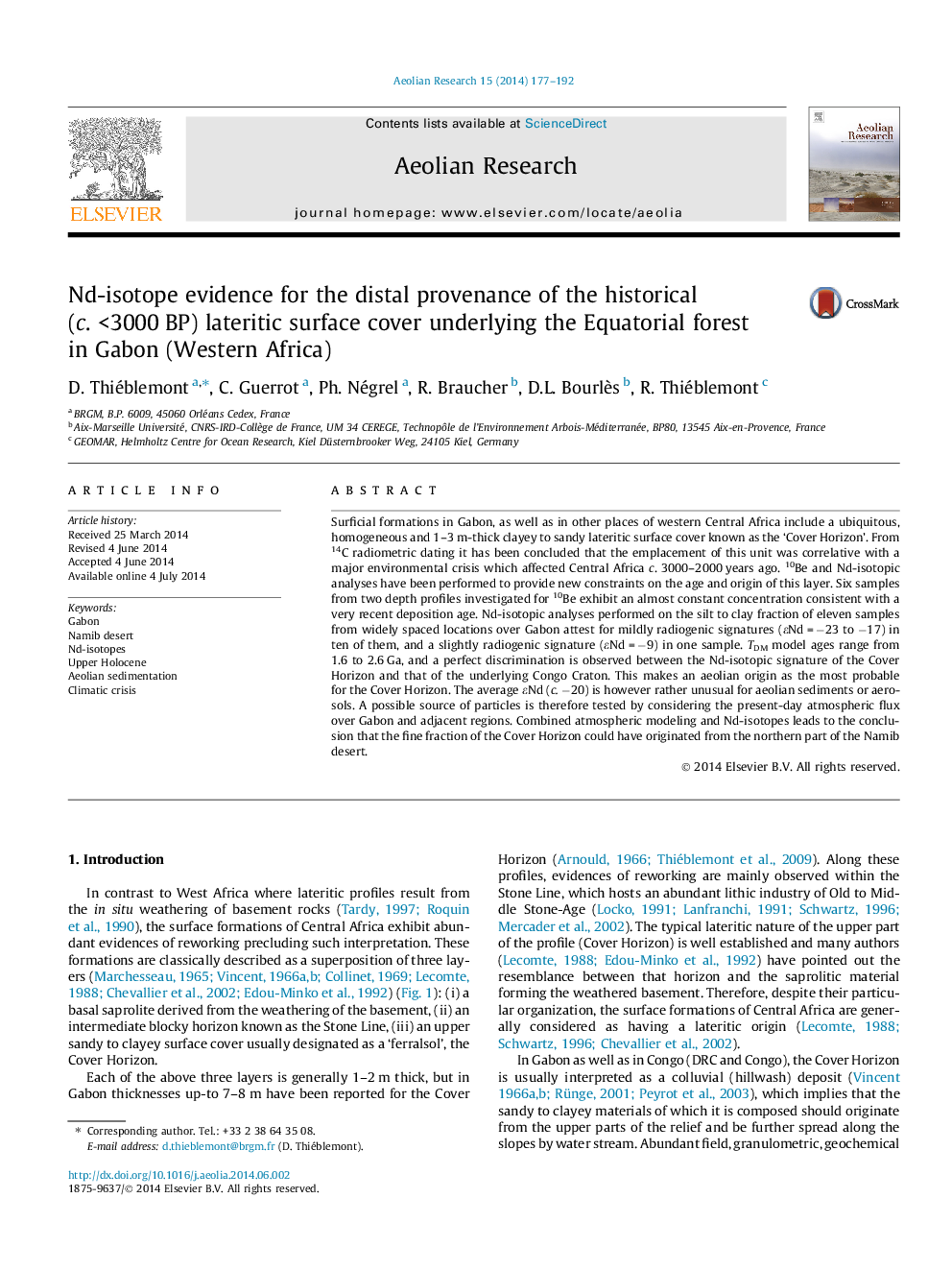| کد مقاله | کد نشریه | سال انتشار | مقاله انگلیسی | نسخه تمام متن |
|---|---|---|---|---|
| 6426357 | 1634112 | 2014 | 16 صفحه PDF | دانلود رایگان |

- The first Nd isotopic data on the lateritic surface cover (Cover Horizon) of western Equatorial Africa.
- Clearly different Nd isotopic signatures between the Cover Horizon and underlying basement.
- A consistent model attributing the Cover Horizon to the settling of aeolian particles derived from the Namib desert.
Surficial formations in Gabon, as well as in other places of western Central Africa include a ubiquitous, homogeneous and 1-3 m-thick clayey to sandy lateritic surface cover known as the 'Cover Horizon'. From 14C radiometric dating it has been concluded that the emplacement of this unit was correlative with a major environmental crisis which affected Central Africa c. 3000-2000 years ago. 10Be and Nd-isotopic analyses have been performed to provide new constraints on the age and origin of this layer. Six samples from two depth profiles investigated for 10Be exhibit an almost constant concentration consistent with a very recent deposition age. Nd-isotopic analyses performed on the silt to clay fraction of eleven samples from widely spaced locations over Gabon attest for mildly radiogenic signatures (εNd = â23 to â17) in ten of them, and a slightly radiogenic signature (εNd = â9) in one sample. TDM model ages range from 1.6 to 2.6 Ga, and a perfect discrimination is observed between the Nd-isotopic signature of the Cover Horizon and that of the underlying Congo Craton. This makes an aeolian origin as the most probable for the Cover Horizon. The average εNd (c. â20) is however rather unusual for aeolian sediments or aerosols. A possible source of particles is therefore tested by considering the present-day atmospheric flux over Gabon and adjacent regions. Combined atmospheric modeling and Nd-isotopes leads to the conclusion that the fine fraction of the Cover Horizon could have originated from the northern part of the Namib desert.
Journal: Aeolian Research - Volume 15, December 2014, Pages 177-192